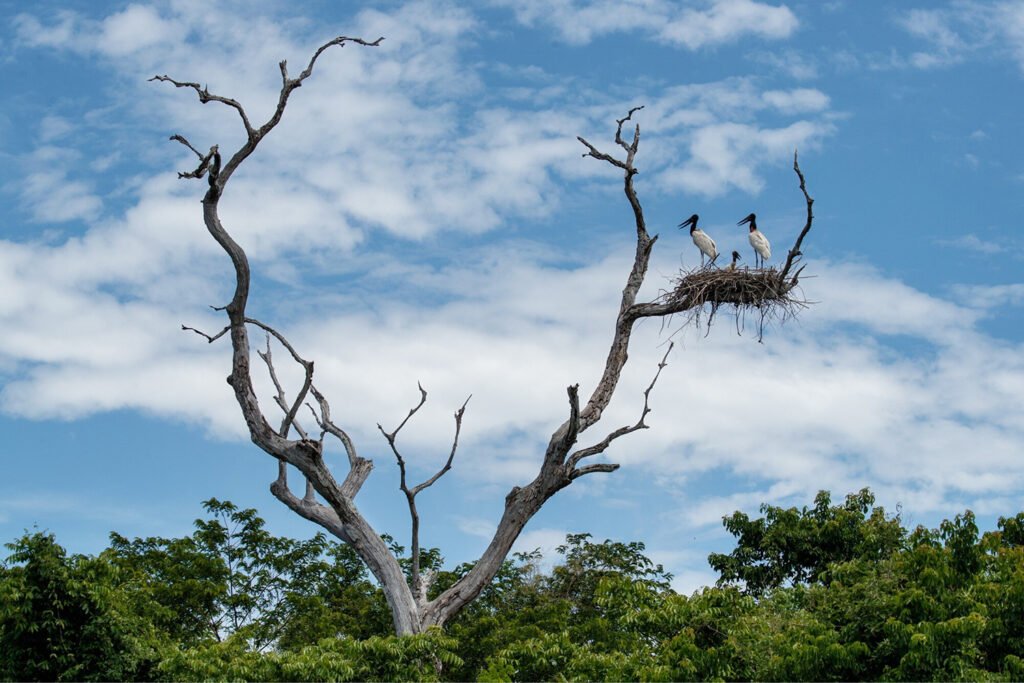Can we afford to stand by as our forests, homes to nearly 70% of bird species, vanish? Deforestation’s relentless march destroys habitats at an alarming rate of 13 million hectares annually. This not only diminishes food sources but leads to a staggering 50% decline in bird populations within these impacted areas. As forests fall, the lush choirs of avian life face an unsettling hush. The need to understand and address the harsh realities of habitat loss and species extinction risk has never been more pressing. This article examines the vital impact of deforestation on bird species and the urgent call to action for their preservation.
Effects of Deforestation on Bird Habitats
Forest fragmentation is a major consequence of deforestation, leading to the division of continuous habitats into isolated patches. How does this affect bird movement? Fragmentation significantly hinders the ability of birds to move freely between areas, which is crucial for seeking food, potential mates, and suitable nesting sites. This isolation can result in a reduced genetic pool, making populations more vulnerable to diseases and environmental changes. Moreover, it limits access to diverse resources, which many bird species rely on throughout their life cycles. Such disruptions often lead to diminished survival rates and lower reproductive success.
Nesting Disruption
Deforestation poses a severe threat to nesting sites, which are vital for the breeding success of forest birds. When trees are removed, birds lose their primary nesting habitats. How does this disruption affect bird species? The absence of suitable nesting sites forces birds to relocate, often to less ideal environments where the risks of predation and starvation are higher. In fragmented forests, the increased edge areas expose nests to more predators, and the altered microclimate can affect egg incubation. These challenges contribute to lower breeding success and can lead to population declines, particularly for species that are highly dependent on specific nesting conditions.
| Effect | Impact on Birds |
|---|---|
| Loss of Habitat | Reduced availability of nesting and feeding sites, leading to decreased populations. |
| Increased Edge Effects | Higher predation rates and altered climate conditions near habitat edges. |
| Isolation of Populations | Limited genetic diversity and increased vulnerability to environmental changes. |
| Disrupted Migration Routes | Loss of critical stopover points, affecting bird migration success. |
Conservation Efforts to Mitigate Deforestation’s Impact on Birds
Protected areas play a crucial role in conserving bird species affected by deforestation. How do protected areas benefit birds? Protected areas serve as safe havens where natural habitats are preserved, allowing bird populations to thrive without the immediate threat of logging and habitat destruction. By maintaining these sanctuaries, bird species can continue to perform their ecological roles, such as pollination and seed dispersal, which are vital for ecosystem health. Expanding these areas and ensuring they are well-managed are critical steps in preventing further bird population declines.
Reforestation and Habitat Restoration
Efforts to restore lost habitats focus on reforesting degraded lands and rehabilitating ecosystems that have been damaged by deforestation. How does reforestation help bird populations? Reforestation provides birds with the necessary environments to nest, feed, and migrate. By planting native trees and shrubs, these projects aim to reconstruct complex forest structures that support a diverse range of bird species. Additionally, habitat restoration involves improving degraded areas to enhance their ecological value, ensuring a stable environment for various avian species.
- Yellowstone to Yukon Conservation Initiative: Connects habitats across North America, allowing birds to move freely and safely between regions.
- Atlantic Forest Restoration Pact: Aims to restore 15 million hectares of Brazil’s Atlantic forest by 2050, benefiting numerous bird species.
- Costa Rica’s Payment for Ecosystem Services: Provides incentives for landowners to preserve and restore habitats, supporting local bird populations.
- Great Green Wall Initiative: An African-led movement to grow an 8,000 km forest across the continent, combating desertification and creating habitats.
- Forest Landscape Restoration in Madagascar: Restores critical habitats for endemic bird species, promoting biodiversity and ecosystem stability.
Community involvement is pivotal in successful conservation efforts. Why is community involvement essential? Local communities are often the stewards of their surrounding environments and can be instrumental in implementing and maintaining conservation initiatives. By involving communities in planning and decision-making, conservation projects can be tailored to local needs and conditions, enhancing their effectiveness. Community-led initiatives foster a sense of ownership and responsibility, encouraging sustainable practices that benefit both people and bird species alike.
Final Words
Amidst the ongoing threat of deforestation, bird species face critical challenges as habitats diminish and ecosystems destabilize. The loss of forests affects birds profoundly, reducing population sizes and driving some toward extinction. Conservation strategies emerge as vital, harnessing the power of protected areas, reforestation, and community action to counteract these adverse effects.
Global initiatives, like commitments from the COP26 summit, signal hope for reversing deforestation trends. By addressing these issues collectively, humanity can mitigate the impact of deforestation on bird species, fostering a more balanced and thriving ecosystem.
FAQ
How does deforestation affect birds?
Deforestation affects birds primarily by destroying their habitats and food sources, leading to a reduction in bird populations and posing a risk of extinction for many species.
How are birds specifically impacted by the loss of trees?
Birds struggle with nesting disruption and reduced breeding success due to habitat fragmentation. Loss of trees also results in limited movement opportunities and food scarcity for birds.
What is the #1 threat to birds in America?
The primary threat to birds in America is habitat loss, largely due to deforestation. It significantly reduces the living and breeding areas necessary for various bird species’ survival.
How does deforestation affect animal species?
Deforestation impacts animal species by eliminating habitats and resources necessary for survival. It causes population declines and potential local extinctions due to increased competition and isolation.
What species is most affected by deforestation?
Tropical birds, especially those that are migratory or rely heavily on specific forest conditions, are among the most affected by deforestation due to their specialized habitat needs.


